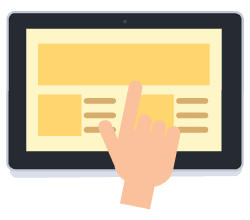Why did the Ancient Indian Educational System Heavily Depend on ‘Extempore Speaking’ for Teaching-Learning?
In 1948, ABET (then, Engineer’s Council for Professional Development) published a book underlying the importance of speaking. It emphasises the role of oral language in building critical thinking and in the development of scientific and engineering concepts.
The Little-Known Secrets about Oral Examinations & Debates
1. It builds higher command on one’s knowledge – Debates put participants in maximum alert – the zenith of their preparedness to absorb maximum knowledge.
2. It Intensifies learning – As questions can originate from anywhere, any time, learning becomes intense.
3. It builds confidence – Belief in themselves and their abilities, and the desire to participate in more sessions.
4. It builds curiosity – It necessitates the discovery of new knowledge through effective tools.
5. It automates critical thinking – The secret is that knowledge is shaped at the point of utterance.
6. It enhances comprehension – It becomes mandatory to comprehend the question as and when it is delivered.
7. It Enhances Self- Control – Responding meaningfully on the spot is the ultimate in communication.
8. It develops Creativity & Innovation: Students look for new ways to prove a point.
9. It Builds Camaraderie: Meet like-minded peers and build healthy bonds of competition – for mutual progress.
10. It Develops Leadership: Self-motivation/the ability to delegate assignments and manage peers.
The Danger of Ignoring Oral Language
Ignoring oral language, or equating the spoken word to the written one, shortcharges a key development process of Indian students. And, it is visible.
“Man does not speak because he thinks; he thinks because he speaks. Or rather, speaking is no different than thinking: to speak is to think.” — Octavio Paz,(1914-1998). Mexican writer and Nobel Prize Winner
How Does i-Max Compensate for this Shortcoming?
i-Max is based on the principle that “speaking for thinking” should be practiced and taught in every subject at every level of education.
i-Max modules encourage extempore speaking in every branch of engineering as extempore speaking is directly linked to critical thinking. Example modules include: AI-based professional interview/viva-voce simulator, Critical thinking and extempore speaking simulator, Professional interview trainer etc.



Comments